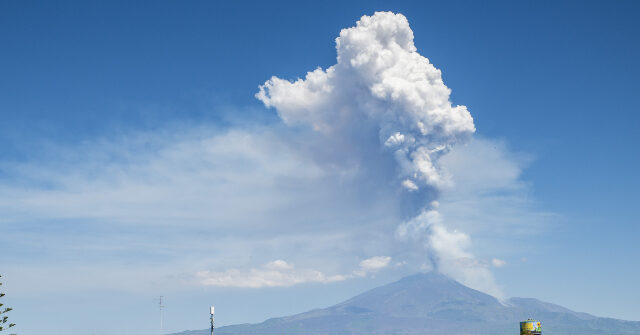The Italian volcano known as Mount Etna erupted Monday, causing quite a stir and leading officials to issue a “code red.”
Nearby homes shook and tourists hiking the mountain ran for safety as plumes of smoke filled the sky, the New York Post reported.
“The Volcanic Ash Advisory Centre Toulouse quickly issued a ‘code red’ as volcanic ash began falling over the tourist haven,” the outlet said.
Video footage caught the moments when a loud roaring was heard and people were seen running away. But a few individuals climbed higher to take in the incredible sight:
According to Fox Weather, Italy’s National Institute of Geophysics and Volcanology (INGV) said the activity culminated with “intense and almost continuous” strombolian explosions.
“The INGV said that strombolian activity is a relatively low-level volcanic eruption, during which a modest amount of energy is released,” the article noted.
“Dramatic photos and video showed dangerous pyroclastic flows racing down the volcano as the eruption intensified, and INGV officials said it didn’t appear as though it crossed the edge of the Valley of the Leo,” it continued.
More video and images show the massive eruption:
Mount Etna, which is located on the eastern coast of Sicily, is the “highest Mediterranean island mountain and the most active stratovolcano in the world,” per the UNESCO website:
The eruptive history of the volcano can be traced back 500,000 years and at least 2,700 years of this activity has been documented. The almost continuous eruptive activity of Mount Etna continues to influence volcanology, geophysics and other Earth science disciplines. The volcano also supports important terrestrial ecosystems including endemic flora and fauna and its activity makes it a natural laboratory for the study of ecological and biological processes. The diverse and accessible range of volcanic features such as summit craters, cinder cones, lava flows and the Valle de Bove depression have made the site a prime destination for research and education.
Mount Etna gets its name from the Greek Aitne, meaning “I burn,” according to Britannica.
“The Greeks created legends about the volcano, saying that it was the workshop of Hephaestus and the Cyclops or that underneath it the giant Typhon lay, making the Earth tremble when he turned,” the website reads. “The ancient poet Hesiod spoke of Etna’s eruptions, and the Greeks Pindar and Aeschylus referred to a famous eruption of 475 BCE [BC].”
Read the full article here



